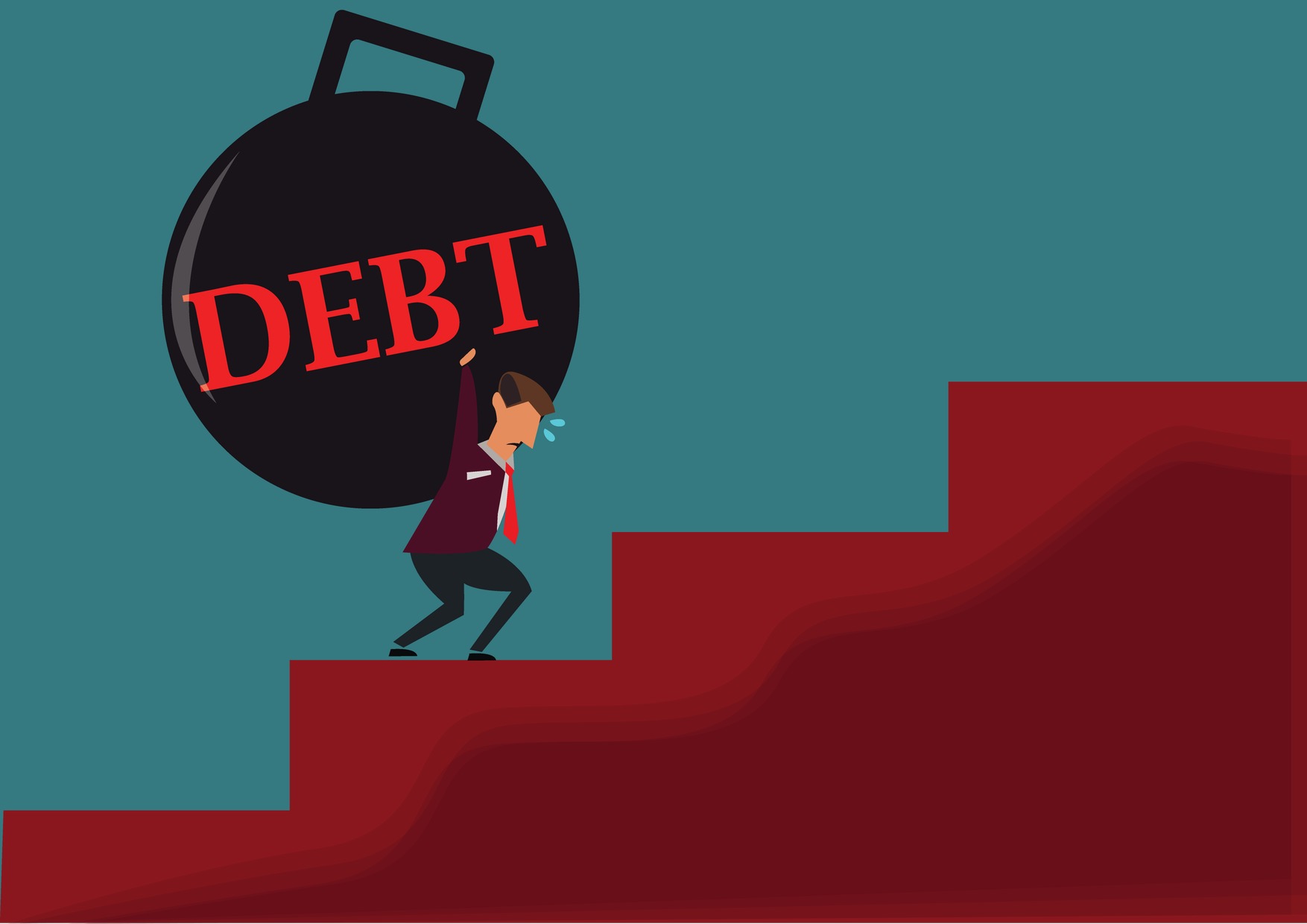Two things are common to life in the U.S.: debt and stress.
The average household is in debt by about $137,000. And, according to the American Psychological Association, the average stress level is rated 4.8 on a 10 point scale, with some 45% of people experiencing stress-related sleep disturbance.
But what is the connection between these two cultural phenomena? Well that same report from the APA found that the number 2 most common source of stress was money: 62% of respondents were stressing about finances.
While taking out a loan or getting a new credit card can open up life changing opportunities, it does raise the question: how much debt is too much?
Every penny you owe, you have to pay back (with interest). And it’s generally easier to get the money than pay it back. So whether you realize it or not, piling up debt could be one of the biggest sources of stress in your life.

Which came first, the debt or the stress?
The interesting thing about the connection between stress and debt is how each leads to the other. It goes both ways…
For example, since such a large percentage of the population is worried about making ends meet and keeping up appearances, they are much easier to sell credit cards to. If your child needs school supplies, you’ve got an emergency room bill to pay, and the rent is due all in the same week—it can be very tempting to cash in on that 0% APR offer that came in the mail yesterday.
In this case, your stress about money causes you to go into more debt.
But then the cycle continues. Now every month you have an extra bill to pay: your credit card. If you’ve also got student loans, another maxed out card, and an auto loan—that huge mountain of debt is looming over your shoulder every single day of every single week of every single month. It’s constantly keeping you stressed.

So how much debt is too much?
Debt isn’t always a bad thing, of course.
It’s certainly better to be free of creditors than in their pocket. But, sometimes it is a necessary evil.
For example, the debt of student loans is often a worthwhile long term investment because it can land you a higher paying job. The debt of owning a car may increase your quality of life because of the convenience it provides and the ability to go to and from work.
But there is a limit to how much debt you should go into. And you can measure it by knowing your debt-to-income ratio.
Calculating your debt-to-income ratio
You can calculate this with a pretty simple math equation: monthly debt payments divided by monthly income.
So, if you have to pay off $1500 in debt every month and make $3000 per month, your debt-to-income ratio is 1500 / 3000, or 0.50.
How much debt is too much? Measured by your debt-to-income ratio, you want to aim for something no higher than 0.30, meaning that no more than 30% of your monthly income should have to go towards paying down your debt.
Why does a lower debt-to-income ratio mean less stress?
Think of it this way: every dollar that is reserved for paying down your debt is money that can’t go elsewhere.
It can’t pay for groceries.
It can’t pay the rent.
It can’t pay utilities.
It can’t pay for a night at the movies.
In other words, the higher your debt-to-income ratio gets, the less money you have to survive and enjoy life. If it gets too high, the only way you can possibly afford the daily necessities is by going into more debt.
Every extraneous dollar of debt you go into reduces your quality of life a little bit more. It not only limits your future possibilities, but it also creates something that will nag you on a recurring basis.
Debt is sort of like a splinter in your foot that you can’t get out. Every step you take reminds you of the pain.

How to reduce your debt and your stress
If you find yourself with an undesirably high debt-to-income ratio, it’s time to do something about it for both your financial security and your mental well-being. It’s probably been on your mind for months already, so here are some active steps you can take to start reducing both your debt and your stress:
1. Stare your debt in the face
If it’s been looming over your shoulder for months (or even years) it’s time to turn around and look your debt square between the eyes.
Write down exactly how much debt you owe, as well as your monthly payments. For revolving debt (from credit cards), you absolutely have to pay the minimum every month. But realistically, you’ll want to pay more to avoid excessive interest.
2. Examine your budget
Next, calculate how much money you have left over after your minimum loan payments every month. From that number, subtract the necessities like food, bills, and rent.
According to DebtChronicles.com, this step is the hardest for most individuals to accomplish due to the fact that they are not honest to themselves about their spending habits.
The money you have leftover in your budget is everything that you could use to pay your debt down even faster. So you’ll have to decide where your priorities lie, which is the focus of the next step…
3. Make a plan
Finally, decide how much of your extra cash is going to go to your debt every month.
You basically have three places to put that money: fun, savings, or debt payment. All three are important, but sometimes we put too much emphasis on the fun (that’s probably how you got in the debt-stress mess in the first place).
If you have no emergency savings right now, commit to saving up at least $1500 for a rainy day. This will help protect you from future situations when you may be tempted to open up another credit card.
Once your savings are set, though, you should decide how quickly you want to pay off your debt. Then, calculate how much extra you’ll have to put in every month in order to meet your goal.
You don’t need to rush long term loans like your mortgage. But you should make a plan to pay off all of your credit cards within the next 12 to 36 months (depending on how serious your debt problem is).
4. Breathe
Finally, take a deep breath.
You don’t have to spend the rest of your life with a debt-induced stress knot throbbing in your neck.
With a solid plan and a commitment to stick to it, you can live a debt-free, stress-free life again.


